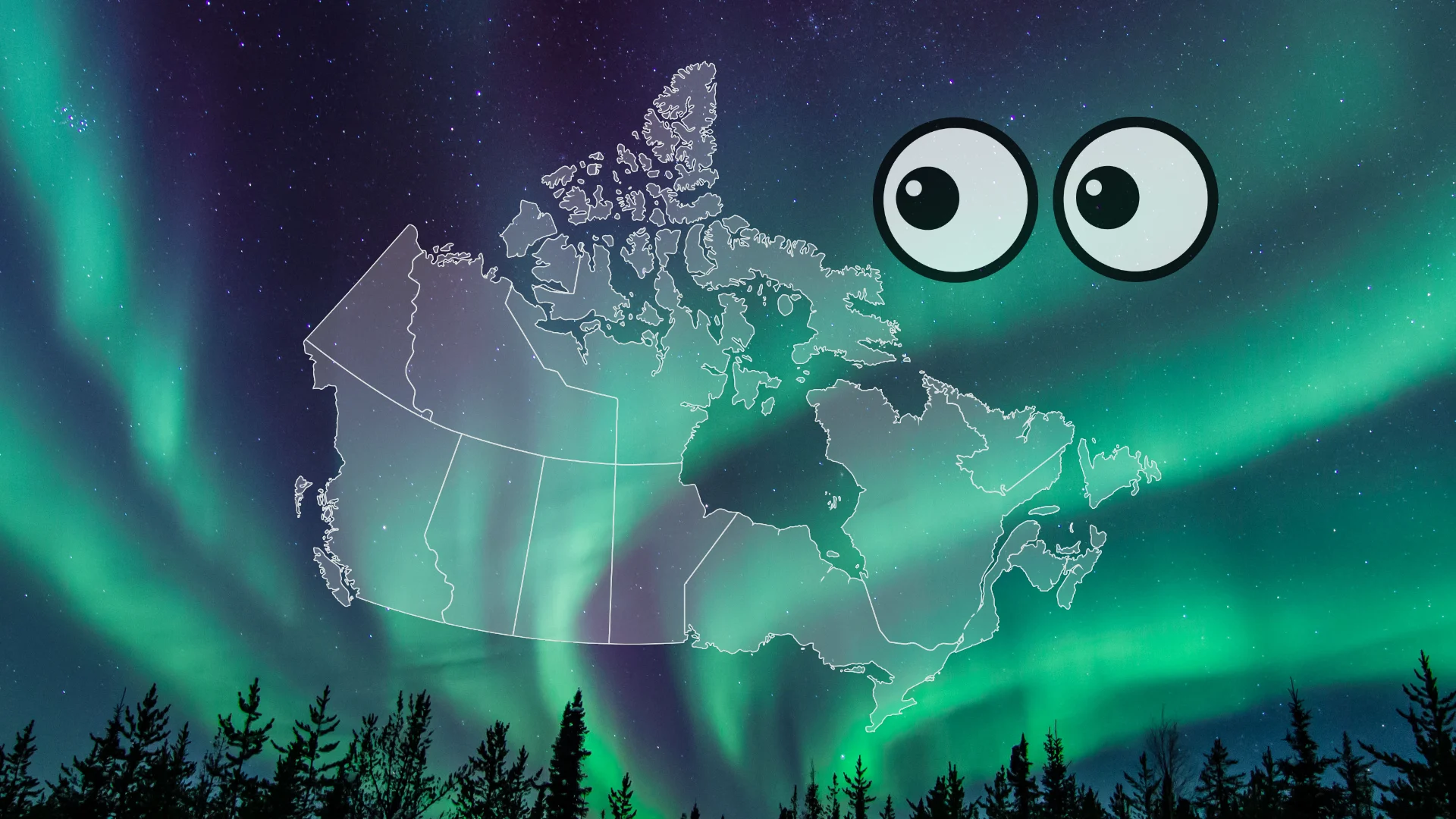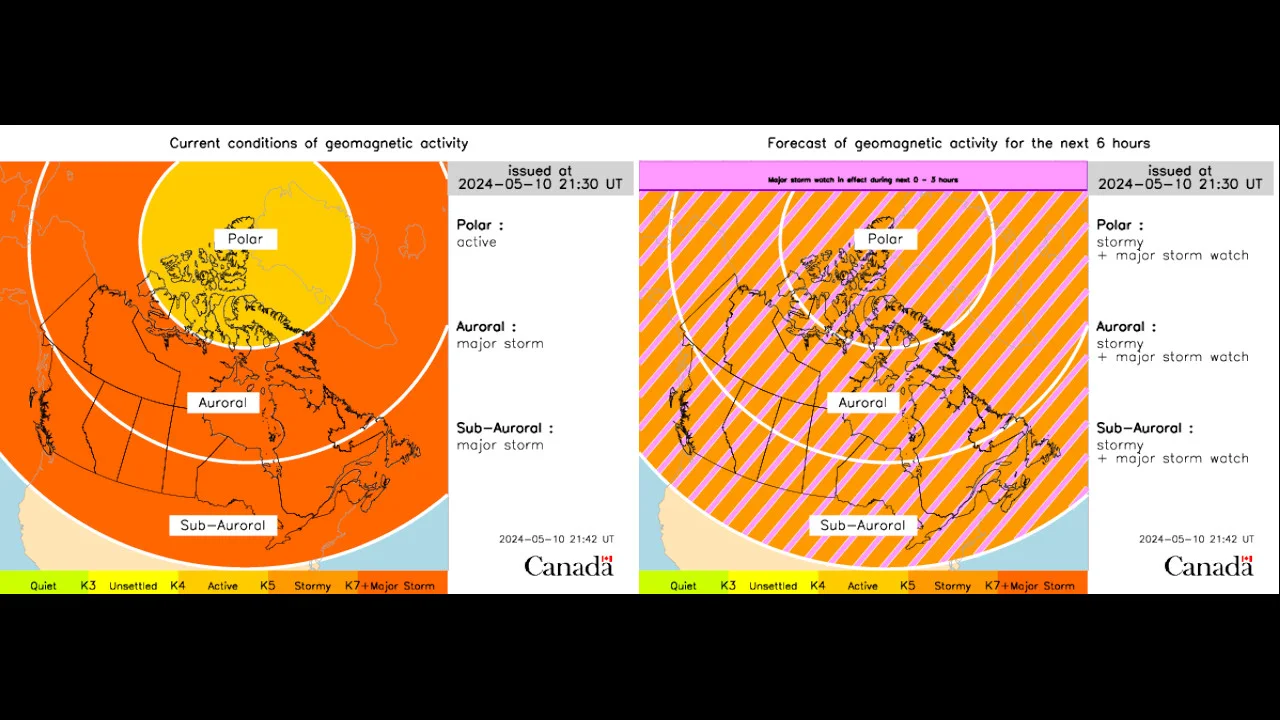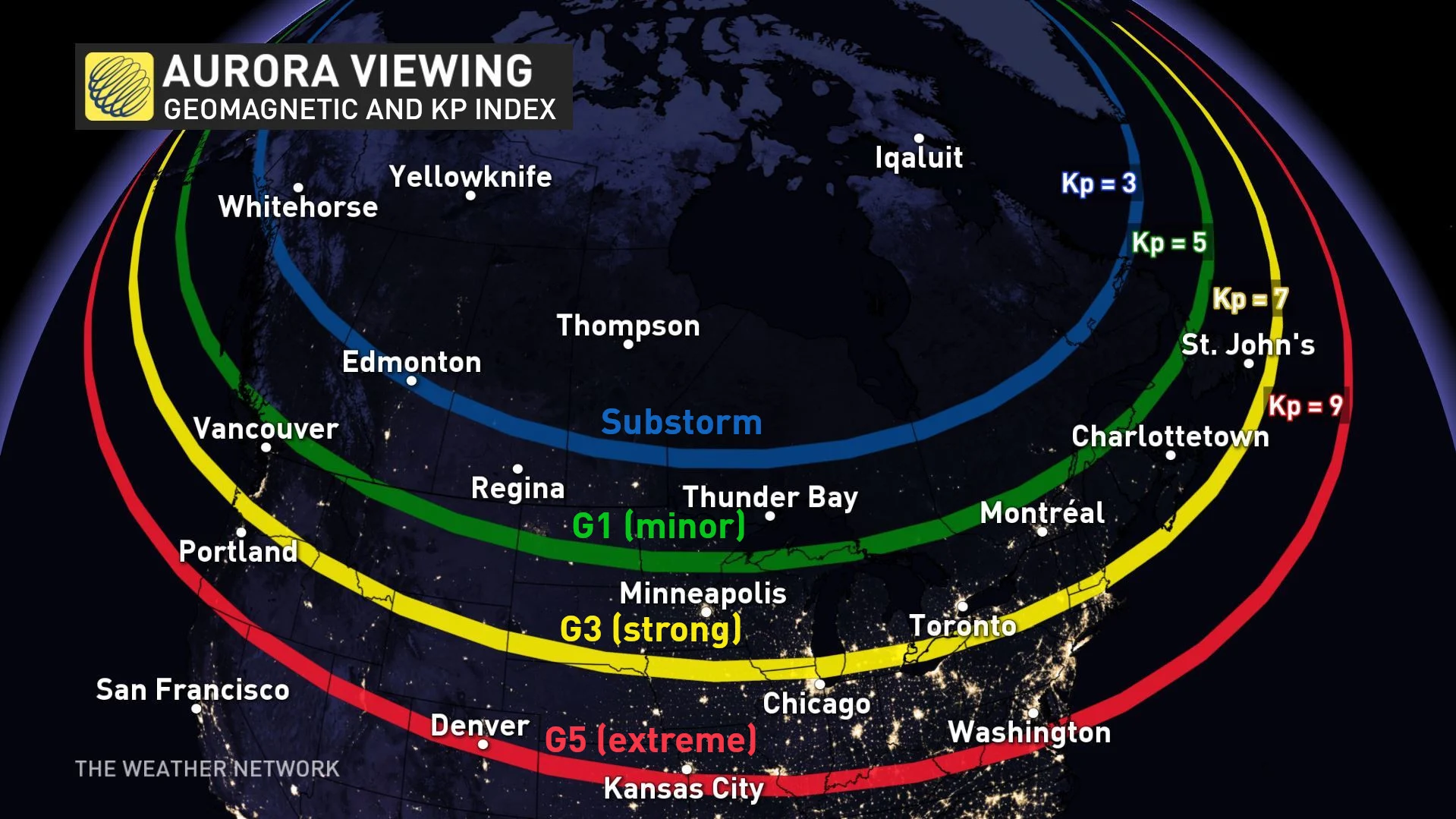
Extreme geomagnetic storm may spark widespread auroras over Canada on Friday
Fingers crossed for clear conditions Friday night as the potential grows for widespread auroras across Canada
Widespread auroras are possible across most of Canada and a large swath of the U.S. on Friday night as forecasters expect an extreme geomagnetic storm to kick off the weekend.
Update (9:00 p.m. EDT)
According to NOAA SWPC, G5 (severe) geomagnetic storm levels began at around 6:54 p.m. EDT on Friday, about six hours after the sudden (and apparently early) arrival of the solar storm at G4 intensity. This is now the strongest geomagnetic storm to hit Earth since Halloween 2003.
SWPC forecasters are expecting severe geomagnetic activity to continue for some time this weekend.
According to Space Weather Canada, both the Auroral and Sub-Auroral zones are experiencing major storm conditions at the time of this update. They have issued a major storm watch for both regions for Friday night.

(Space Weather Canada/Natural Resources Canada)
With the geomagnetic storm beginning much earlier than originally forecast, most of the auroras will be first seen across northern Russia and Europe. Canadians will need to wait until the Sun sets before we have our chance to see them, however they may be visible across the entire country, depending on sky conditions at the time.
The original story continues below...
This event ranks as a ‘severe’ G4 on the scale used to measure the intensity of geomagnetic storms. The scale ranges from from G1 (minor) on the low end to G5 (extreme) on the high end.
Forecasters with NOAA’s Space Weather Prediction Center (SWPC) issued a geomagnetic storm watch ahead of the event, saying on Friday that “watches at this level are very rare.” This is the first G4-level watch issued by the agency since January 2005.
DON'T MISS: From auroras to eclipses, clouds aren’t a stargazing deal breaker
Expected to arrive late Friday night
Our weekend aurora potential is the result of three separate coronal mass ejections (CMEs) merging into one as they approach Earth. A CME is a burst of plasma and magnetic field released from the Sun’s blazing hot outer atmosphere.

The charged particles of a CME can filter into Earth’s upper atmosphere around the magnetic poles, ionizing gasses like oxygen and hydrogen to create the phenomenal display of dancing colours we see as the northern lights.
The SWPC expects the geomagnetic storm to peak late Friday night into very early Saturday morning, with the strongest aurora potential around 11:00 p.m. to 5:00 a.m. Eastern Time, or 8:00 p.m. to 02:00 a.m. Pacific Time.

Any change in this geomagnetic storm’s arrival time would affect Canada’s viewing. An earlier arrival might favour Europe over Canada, while a later arrival might allow for more widespread viewing opportunities across the country.
A geomagnetic storm of this caliber could produce visible auroras far south of the border, as well. NOAA says that the northern lights could be visible as far south as Alabama and northern California if the event peaks at the right time.
Clouds may obscure the view for some regions
Sunlight is only part of the equation when it comes to spotting the northern lights. Where might clouds obscure the view?

The latest forecast for Friday night paints a mixed picture across the country. Cloud cover may obscure the view for parts of the East Coast, including for folks in St. John's and Halifax.
A decent chance for plenty of clear skies could allow fantastic viewing for a wide swath of Quebec, including the Montreal area, as well as much of southern Ontario. You’ll want to get away from the bright lights of the Greater Toronto Area's for the best chance at seeing colours dance in the night sky.
Farther west, aurora watchers may find luck between patchy clouds expected to blanket northern Ontario and portions of Manitoba.

The best opportunity for clear skies exists on the western Prairies and into British Columbia. Folks around Regina, Saskatoon, Edmonton, and Calgary may catch a good show if this geomagnetic storm lives up to its full potential. Clear skies throughout B.C. may offer a good view if the northern lights arrive after sunset and twilight.
WATCH: How to find the best aurora borealis spotting sites near you
Aurora potential increases as solar maximum arrives
We’re approaching the maximum of Solar Cycle 25, a period during which solar flare and sunspot activity increases—along with more opportunities for CMEs that may produce auroras.

Experts rate the intensity of geomagnetic activity on the Kp Index, which ranges from Kp 0 on the low end to Kp 9 on the high end. Values around Kp 7 are sufficient for nationwide aurora visibility.
MUST SEE: Solar max is approaching. Here’s where and how to see the Northern Lights
Several geomagnetic storms since late last year have produced widely viewed auroras in the Northern Hemisphere, including a G3 (strong) storm in November that made the northern lights visible as far south as Virginia and Ukraine.
Auroras aren’t the only effects of a geomagnetic storm. The surge of charged particles into the atmosphere can cause radio blackouts and GPS disruptions. The strongest geomagnetic storms can even threaten power grids.











